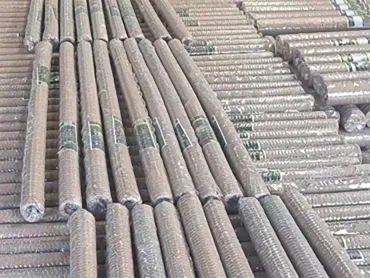marras . 07, 2024 11:26 Back to list
Hydraulic Hose Fittings and Connectors for Reliable Fluid Transfer Solutions
Understanding Hydraulic Hose Connectors and Fittings
Hydraulic systems are crucial in various industries, including construction, manufacturing, and automotive. At the heart of these systems, hydraulic hose connectors and fittings play a vital role in ensuring fluid power transmission with efficiency and reliability. This article explores the types, functions, and importance of hydraulic hose connectors and fittings, as well as tips for selection and maintenance.
What Are Hydraulic Hose Connectors and Fittings?
Hydraulic hose connectors and fittings are components that connect hoses to other parts of a hydraulic system, such as pumps, valves, or cylinders. These fittings create a secure and leak-proof connection, allowing fluid to flow efficiently through the system. The design, material, and type of fittings used can significantly affect a hydraulic system's performance and longevity.
Types of Hydraulic Hose Connectors and Fittings
There are several types of hydraulic fittings, each designed for specific applications. Some of the most common types include
1. Crimp Fittings These fittings are attached to hoses using a crimping machine, which compresses the fitting onto the hose. This type provides a strong and durable connection, ideal for high-pressure applications.
2. Threaded Fittings These fittings have male or female threads that allow them to be screwed onto hoses or other components. Common thread types include NPT (National Pipe Thread) and BSP (British Standard Pipe). Threaded fittings are often used in situations where disassembly and reassembly may be required.
3. Flange Fittings Flanged fittings consist of two flat surfaces bolted together, making them suitable for large pipes and high-pressure systems. They provide strong connections and are easy to maintain.
4. Push-to-Connect Fittings Designed for ease of use, these fittings allow hoses to be attached quickly without the need for tools. They are ideal for small repair jobs and temporary applications.
5. Barbed Fittings Barbed fittings feature a series of ridges that grip onto the hose, creating a secure connection when coupled with hose clamps. These are commonly used in lower-pressure applications.
The Importance of Quality in Connectors and Fittings
The performance of a hydraulic system largely depends on the quality of its connectors and fittings. Poor-quality fittings can lead to leaks, reduced efficiency, and increased maintenance costs. When selecting fittings, factors to consider include
hydraulic hose connectors fittings

- Material Common materials for hydraulic fittings include steel, stainless steel, and brass. The choice of material should depend on the operating environment (e.g., exposure to corrosive substances) and the pressure rating of the application.
- Pressure Rating Every fitting comes with a pressure rating, which indicates the maximum pressure it can withstand. Selecting the right rating is crucial to prevent failures.
- Compatibility Ensure that fittings are compatible with the hoses and other components in the hydraulic system. Mismatched sizes or types can lead to leaks or system malfunctions.
- Standards Compliance Look for products that adhere to industry standards (e.g., SAE, ISO), as these are likely to provide better performance and reliability.
Maintenance and Care
Regular maintenance of hydraulic hose connectors and fittings is essential to ensure a long service life. Here are a few tips for maintaining a hydraulic system
- Inspect Regularly Periodically check fittings for any signs of wear, corrosion, or leaks. Early detection can prevent catastrophic failures.
- Tightening Ensure that fittings are properly tightened, but avoid overtightening, which can lead to damage.
- Cleanliness Keep the fittings and hoses clean to prevent contamination of the hydraulic fluid, which can affect system performance.
- Replace When Necessary If any component shows signs of fatigue or damage, replace it immediately to maintain system integrity.
Conclusion
Hydraulic hose connectors and fittings may seem like minor components in a hydraulic system, but their significance cannot be overstated. Understanding their types, functions, and importance can help in selecting the right components for your needs, ultimately ensuring the efficiency, safety, and reliability of hydraulic operations. With proper maintenance and care, these fittings can contribute to the long-term success of your hydraulic applications, making them essential for any industrial setup.
-
Weather Resistance Properties of Quality Roofing Nails
NewsAug.01,2025
-
How Galvanised Iron Mesh Resists Corrosion in Harsh Environments
NewsAug.01,2025
-
Creative Landscaping Uses for PVC Coated Wire Mesh Panels
NewsAug.01,2025
-
Common Wire Nail Dimensions and Their Specific Applications
NewsAug.01,2025
-
Choosing the Right Welded Wire Sheets for Agricultural Fencing
NewsAug.01,2025
-
Anti - Climbing Features of Razor Wire Barriers
NewsAug.01,2025









